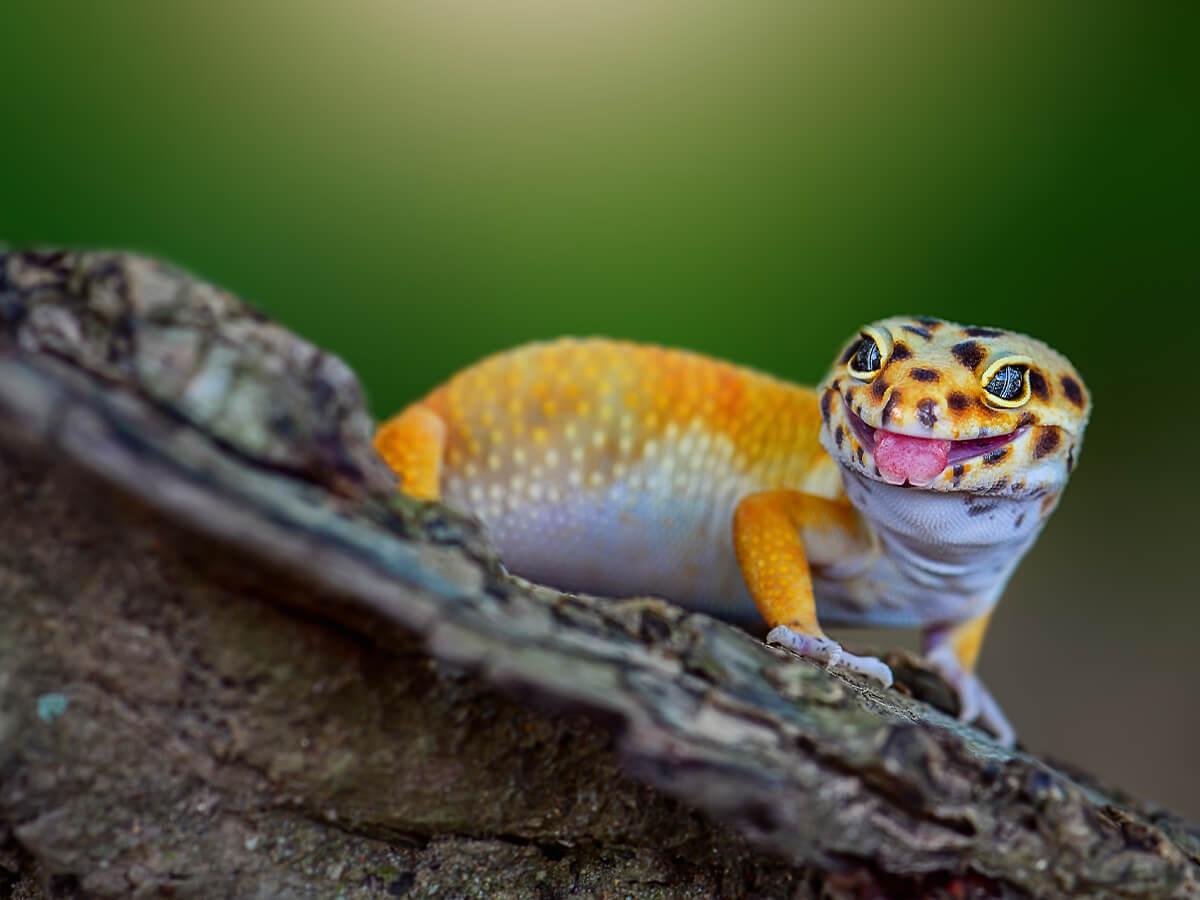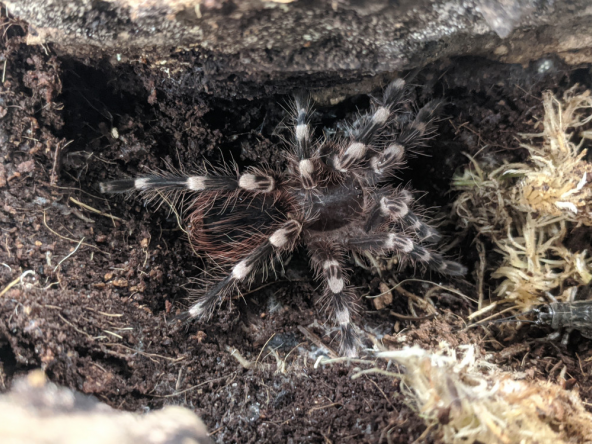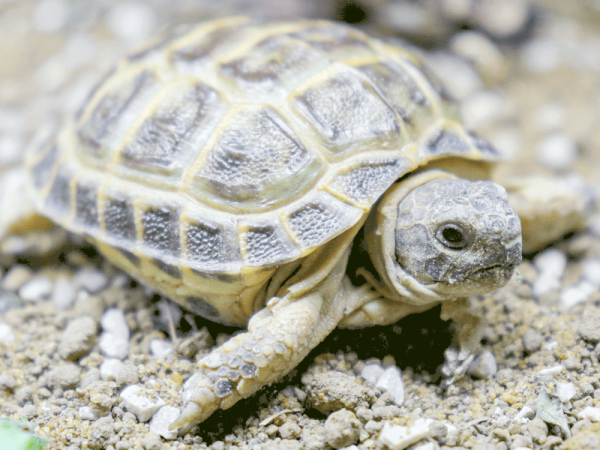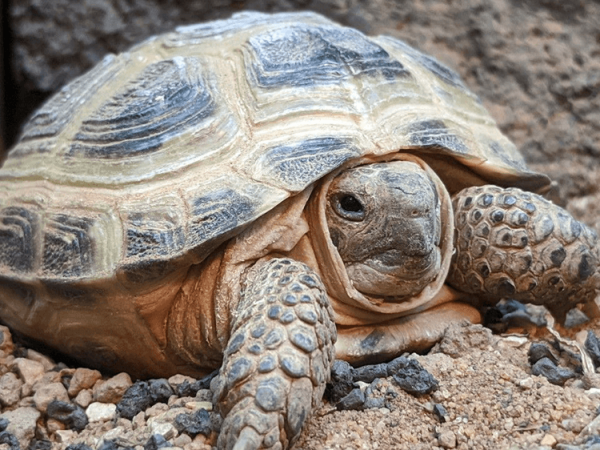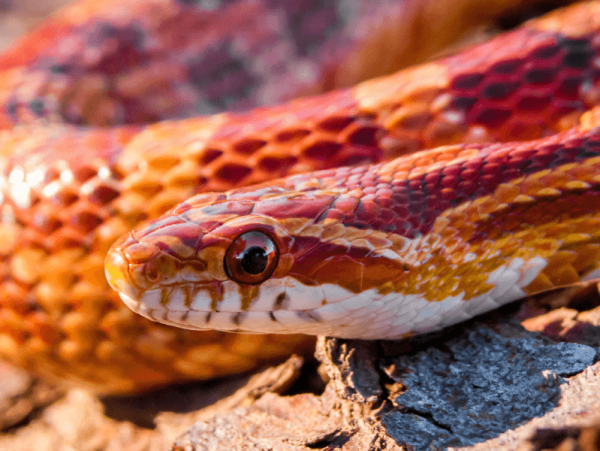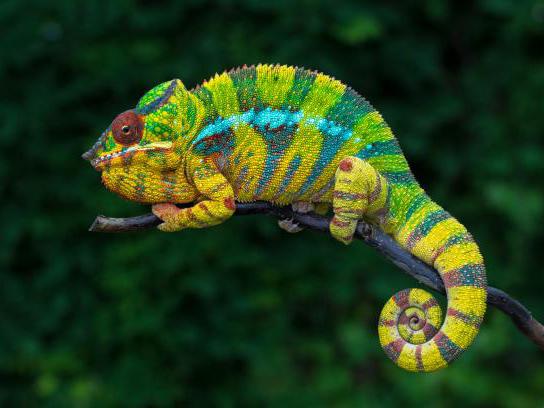Optional extras
Leopard gecko, Eublepharis macularius, care sheet
Categories: Care sheetsLizards
Leopard gecko natural history
Leopard geckos are medium-sized, terrestrial lizards which inhabit the arid, rocky grassland and desert habitats of Afghanistan, Northwest India, Pakistan, Iran and Nepal. Adult Leopard geckos can grow to around 20cm (8") from nose to tail and tend to have quite stout bodies with a thick tail filled with fat stores.
The wild-type Leopard gecko is characterised by leopard-like markings along the body, although there are hundreds of morphs on the market with varying colours and patterns, so you will be sure to find one that is appealing to you. Some of the most popular morphs include Mack Snow, Jungle, Carrot tail, Albino, Blizzard, High yellow and Tangerine.
Leopard geckos have been captive-bred in the exotic pet hobby for quite some time now, and are one of the most commonly kept lizards in the world, which has led to the emergence of the morphs referenced above.
Their popularity in the hobby can be attributed to a few of their key traits, Leopard geckos are hardy animals with easy-to-meet care requirements, have generally docile temperaments and have an undeniably cute appearance. All of this makes them a perfect choice for beginner or younger keepers and experienced hobbyists alike. However, Leopard geckos live for around 10-20 years in captivity, so it is important to consider this and ensure you're ready for such a long commitment before you purchase one.
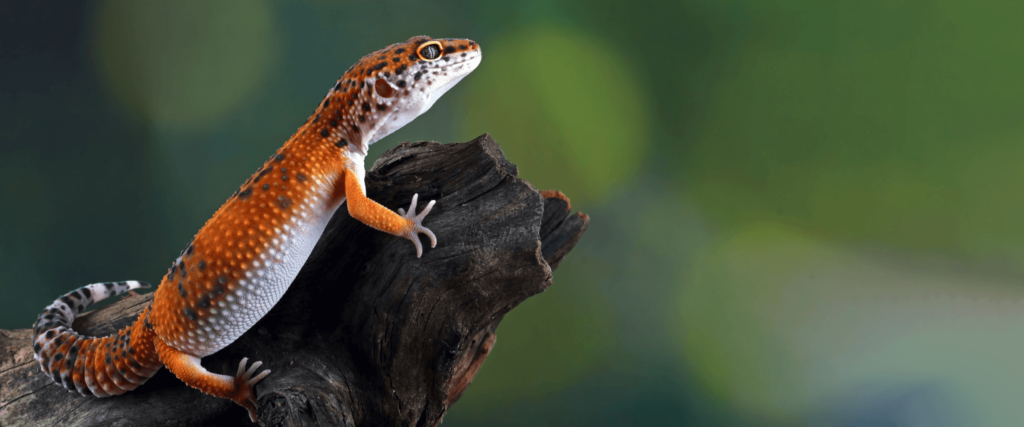
Leopard gecko housing
Despite only being quite a small animal, Leopard geckos are quite active during their crepuscular waking times (dawn and dusk), when they will come out to hunt food and soak up some UVB light from the rising or setting sun. Due to this, they still require plenty of space to roam and be provided with adequate enrichment. We, therefore, recommend a minimum enclosure size for an adult gecko to be 90 x 60 x 60cm (3 x 2 x 2ft).
Leopard geckos are a solitary species and can get quite territorial, particularly male geckos. We, therefore, recommend against keeping this species in pairs or groups, as this can often lead to fights and even if no fighting is observed, competition over resources will occur.
To make things even easier, why not take a look through our range of Leopard gecko starter kits?
Leopard gecko heating
The correct temperature gradient for a Leopard gecko would be around 30-32°C (86-98°F) on the warm side and around 22°C (71°F) on the cool side. This is most easily achieved using an overhead heating system such as a heat bulb or ceramic heat emitter. All heating equipment must be connected to a compatible thermostat to prevent overheating, so if you opt for a basking lamp, you will need a dimming thermostat, or a pulse thermostat if you opt for a ceramic heater.
There is a common misconception in online forums and social media groups that Leopard geckos also require a heat mat or undertank heating pad along with their overhead heating system. However, this is not the case and if your overhead heating system is set up and working correctly, there is no need for an additional heat source, if anything, this would be likely to cause overheating.
Heating pads or a heat mat alone will also not work well enough to warm the ambient temperature and create a proper temperature gradient in the medium-large sized enclosures required by this species, so should not be used as a substitute for an overhead heating system.
As the temperature naturally drops overnight, Leopard geckos only require overnight heating if your home drops below around 15°C (59°F). If this is the case for you, you can use a non-light emitting heat source such as a ceramic heater, set to a lower temperature than during the day to ensure you are still mimicking the natural nighttime drop in temperature.
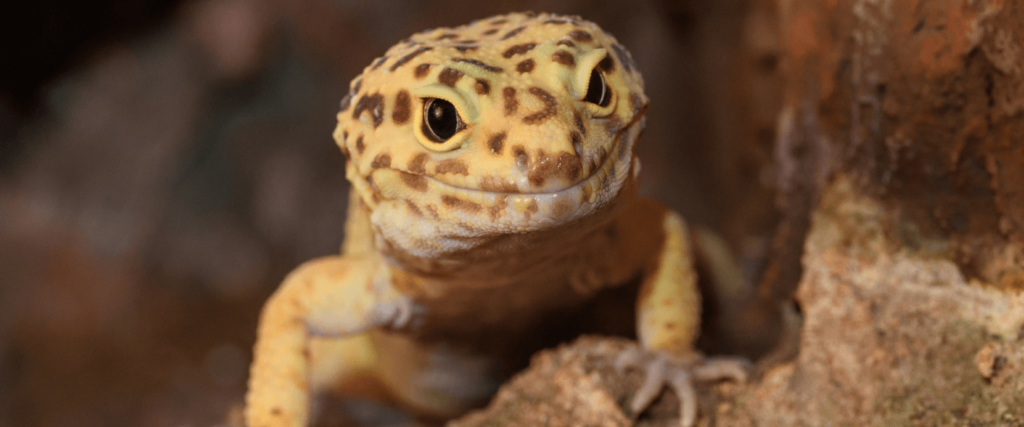
Leopard gecko lighting
Leopard geckos were long kept without the use of UV lighting, as it was believed that due to their crepuscular nature they did not require it. However, more often than not this led to the geckos developing metabolic bone disease, deformities and often fatalities. More recently, research has shown that the addition of low-level UVB lighting for a Leopard gecko is extremely beneficial, decreases the risk of a plethora of illnesses and leads to a much more healthy gecko.
The ideal UVI for Leopard geckos is between 1-2, which is most easily achieved using the Arcadia ShadeDweller ProT5 Kit placed 25-40cm (10-15”) above the gecko's highest basking point. If the distance between the highest basking point and the light fixture will be greater than 40cm (15”), but no higher than 45cm (18”), then you will require the slightly more powerful Arcadia ProT5 Kit - Forest 6%.
Leopard gecko humidity
Since they are desert reptiles, Leopard geckos have low humidity requirements with the ideal range sitting between 30-40%, which is easily achieved with little intervention. To ensure the humidity does not rise beyond this, you should keep your shallow water dish on the cool side of the enclosure to reduce evaporation, and can also install a small fan to increase ventilation if required, although these instances are rare.
To ensure your Leopard gecko receives enough hydration during their shed cycle, it is important, however, to provide them with a humid hide box, which will essentially be an enclosed hide box filled with damp sphagnum moss. This gives your Leopard gecko an area to soak up some moisture without affecting the overall humidity of the enclosure.
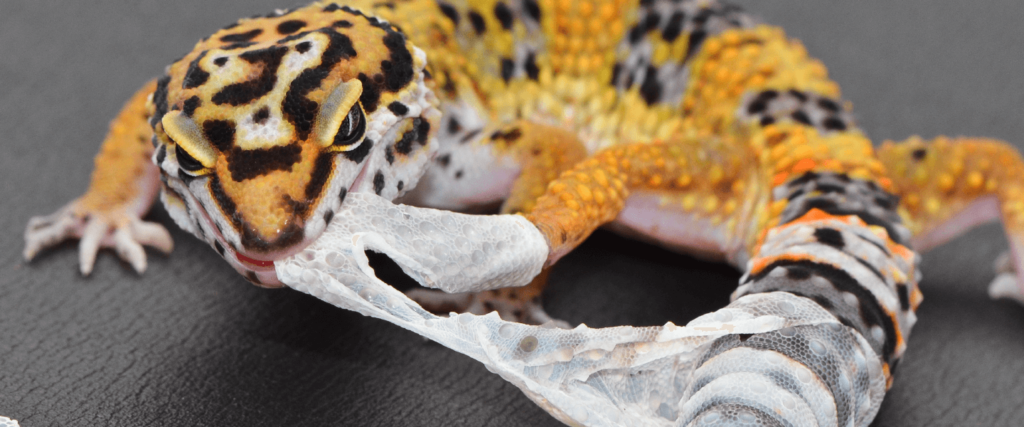
Leopard gecko substrate
Due to their low humidity requirements, a good Leopard gecko substrate will not hold excess moisture. Therefore, we recommend the use of sandy substrates or sand-soil mixes for your Leopard gecko. We do not recommend the use of reptile carpet, however, as this tends to harbour bacteria over time and the Geckos claws can also become stuck in the fibres causing injury.
There is some controversy around using sandy substrates for most reptile species, due to some suffering from intestinal impaction due to the ingestion of sand. However, this usually comes down to improper husbandry, a healthy Leopard gecko will not actively seek nutrition from its substrate when all of its other husbandry requirements are being met, particularly its dietary requirements, therefore, the use of sandy substrates is still the best course of action as it most closely mimics the natural habitat of Leopard geckos.
Leopard gecko tank decoration
To provide enrichment and ensure your Leopard gecko feels safe and secure, their enclosure should be littered with decor pieces such as pieces of wood, foliage, hides and caves, along with your all-important humid hide box.
Rough pieces of decor, such as wood pieces or rocks will also help to keep your Leopard gecko's claws down, reducing the risk of related health issues.
It is also important to provide a shallow water dish on the cool side, away from the basking lamp, to provide hydration without increasing the overall humidity levels, cleaning and refilling with fresh water daily.
Leopard gecko diet
Leopard geckos eat insects, so are insectivores and should be fed on a varied diet of live insects, such as Crickets, Locusts, Dubia roaches and Mealworms. All livefood should be dusted with supplements to ensure that your Leopard gecko gets all of the nutrients they require to prevent metabolic bone disease and intestinal impaction.
For this, we recommend the use of a high-quality multivitamin on every feed, such as Arcadia EarthPro-A, a calcium plus magnesium supplement on every fourth feed, such as Arcadia CalciumPro Mg and finally, a vitamin D3 supplement on every eighth feed such as Arcadia EarthPro RevitaliseD3.
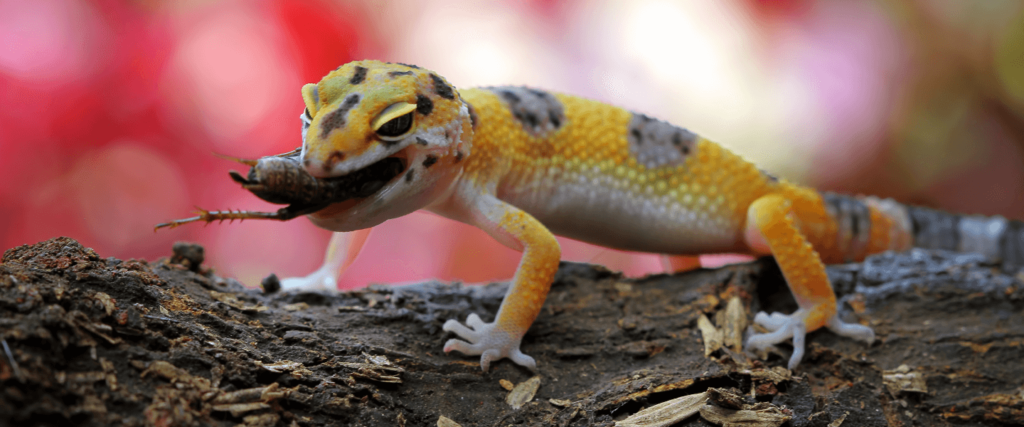
Leopard gecko breeding
The breeding of Leopard geckos is quite simple when compared to many other reptile species. Due to this, many inexperienced keepers have taken to breeding their Leopard geckos, which has led to the oversaturation of captive-bred Leopard geckos with poor genetics in the hobby. It is for this reason that we recommend against breeding for less experienced keepers with what some may consider to be 'low quality' Geckos.
Leopard geckos reach sexual maturity when they weigh around 35-40g, which is usually at around the 18-24 month mark, although this can differ between individuals so it is important to keep track of your Geckos' weight if you plan to breed them. The breeding season for wild Leopard geckos runs from January to September, however, they can be encouraged to breed at any time of the year in captivity with a change in conditions.
To trigger the 'breeding season' in captivity, you must shorten the day period and decrease the temperature gradient so that the warm end sits closer to 21-24°C (70-75°F) and maintain these conditions for around 6 weeks before introducing your breeding pair.
Prior to and during this period, you should increase the amount of calcium offered to your female Leopard gecko to ensure they have enough calcium to produce strong, hardy eggs. You can also put a small dish of calcium powder in with your Gecko for them to take calcium as they wish.
Adult females will lay two eggs per clutch, and will generally lay one to five clutches throughout the breeding season. As the eggs develop, you will begin to see your female getting wider and more bottom-heavy, and will eventually be able to see a clear outline of the eggs through her stomach. At this point, you should have already placed a shallow lay box filled with a moist and soft substrate into the enclosure for the female to lay her eggs into.
Once the eggs are laid, they must be removed and incubated in a tub with an incubation medium. The temperature during the first two weeks of incubation will determine the sex of the hatchlings, temperatures of around 26°C (79°F) are likely to produce females, temperatures between 29-31°C (85-87°F) will produce a mix, and temperatures closer to 32°C (90°F) will produce mostly males.
Once the little Geckos hatch, the care for young geckos is very similar to that of an adult Leopard gecko. They will survive off nutrients from their egg yolk in the first week of life, after this, they will have their first shed, at which point you can begin feeding every day or every other day, to the same supplementation schedule as you would for an adult.
Alternative species
If you like the sound of a pet Leopard gecko but aren't 100% sold, there are some other options with similar temperaments or care requirements that may be more appealing to you. For example, although they have vastly different care requirements, Crested geckos make great pets, with their equally calm disposition when compared with Leopard geckos, and they're very easy to care for.
Another idea could be the African fat-tailed gecko, they look very similar to Leopard geckos, but with different markings and prefer a slightly more humid enclosure. They can also be a little more wilful and take a bit of taming, which makes them a great choice for more intermediate keepers looking for a bit of a challenge.
If a Leopard gecko sounds like the perfect pet for you, why not check if we have any in stock, or even contact our store team to discuss the details and find the right Leopard gecko for you.
Leopard gecko care sheet at a glance
Common names: Leopard gecko, Leo
Scientific name: Eublepharis macularius
Country: Afghanistan, India, Pakistan, Iran and Nepal
Captive-bred: Yes
Adult size: 20cm (8")
Natural habitat: Arid, rocky grassland and desert habitats
Housing: 90 x 60 x 60cm (3 x 2 x 2ft)
Ideal temperature: 30-32°C (86-98°F) (warm end); 22°C (71°F) (cool end)
Ideal humidity: 30-40%
Diet: Insectivorous
Average lifespan: 10-20 years
Personality: Docile
Ease of handling: Easy
Cohabitable: No
Leopard gecko shopping list
- 90 x 60 x 60cm (3 x 2 x 2ft) vivarium (minimum)
- Heat lamp fixture
- Basking lamp or ceramic heat emitter
- Thermostat (dimming or pulse depending on the heat source)
- T5 lighting kit
- Digital thermometer x2
- Water bowl
- Substrate
- Hides and decor
- Supplements (multivitamin, calcium + mg and D3)
- Reptile safe disinfectant
While you're thinking about caring for your new Leopard gecko, why not take a look through our range of Leopard gecko starter kits? Designed so that you can get everything you need to get started in one go, at a great price!
Becky Bates has always had a fascination with animals, particularly reptiles, amphibians, and invertebrates from a young age. A graduate of Zoology, she is a dedicated and experienced reptile keeper providing top-notch advice and care to Swell Reptiles customers. With her extensive experience with animal biology and behaviour, she understands the importance of promoting a healthy, safe, and happy environment for all animals.




